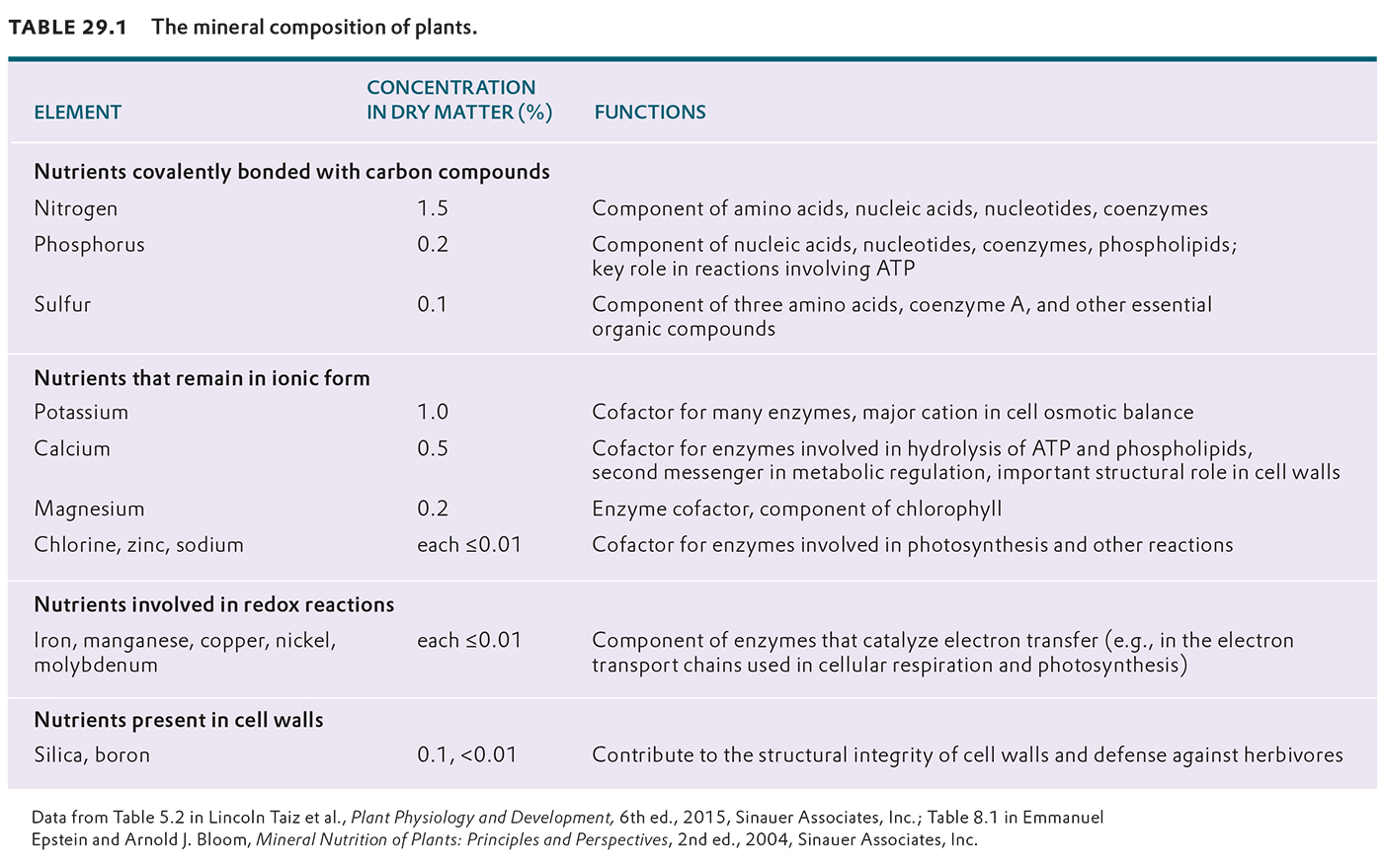Plants obtain essential mineral nutrients from the soil.
On average, plants are 85% water and only 15% dry material. About 96% of the dry material, by weight, is made up of three elements: carbon, oxygen, and hydrogen. The remaining 4% is made up of minerals, which are elements that come from the soil. Minerals play essential roles in all metabolic and structural processes (Table 29.1), despite making up only a small fraction of the plant’s body. A deficiency in any one of them results in a plant that grows poorly and has a low rate of photosynthesis.

614
The essential mineral nutrients can be divided up into four groups. Nitrogen, phosphorus, and sulfur are components of many organic molecules, including amino acids, nucleic acids, and phospholipids. Another group of nutrients remain in an ionic (charged) form and play important roles as enzyme cofactors and second messengers (for example, calcium) and in maintaining the osmotic balance of cells (for example, potassium). Magnesium ions are critical for photosynthesis because they occur in chlorophyll. Metal elements such as iron and zinc are primarily involved in reactions that transfer electrons from one molecule to another. The final group includes elements that contribute to the structural integrity of the cell wall, such as calcium, silica, and boron.